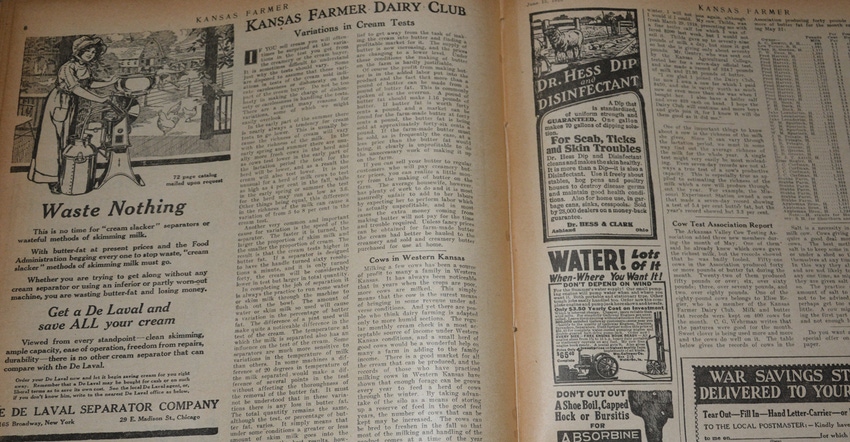June 7, 2018

The United States had pulled out all the stops in the effort to win World War I in July 0f 1918. But the U.S. Food Administration was urging all parents and caregivers to be sure to keep one staple in the diet of children, the sick and the wounded: milk.
"Milk is one of the most important food sources the human race possesses. For the proper nourishment of the child, it is absolutely indispensable and its use should be kept up in the diet as long as possible," the advisory read. "Not only does it contain all the essential food elements in the most available for ready digestion, but the recent scientific discoveries show it to be especially rich in certain peculiar properties that alone render growth possible."
70 years ago
In July of 1948, 70 years ago, then-Kansas Farmer publisher Arthur Capper mused that a trend toward larger and fewer farms "doesn’t need to go on forever." He saw efficiently sized equipment, fertilizers and seed advances as signals that smaller farms could be more productive and allow more families to make a living. On many subjects, Capper was spot on about the future of farming. On this one, not so much.
60 years ago
It was a record wheat crop in 1958, and farmers were hustling to get the bounty in the bin when July rolled around. The crop was expected to set a per-acre yield record at 23 bushels to the acre, making the crop about 14% above average and up 33% from the prior harvest. The total harvest was projected to total 244,789,000 bushels.
The giant crop put a strain on commercial storage facilities and on the railroads, the primary transportation for moving the crop from the countryside to terminal elevators.
50 years ago
The alfalfa weevil, the number one pest plaguing farmers east of the Mississippi River, was swiftly moving into Kansas in July of 1968. The larval stage of the insect does the most damage to the crop, feeding within the plant tips and on the upper leaves as they open.
Kanas State University scientists told alfalfa producers that several chemical insecticides were being developed to control the alfalfa weevil and were expected to be on the market in two or three years.
Even with no immediate control available, producers were encouraged to scout their fields and report any infestation of weevils to their county agent in order to help K-State better track the spread of the pest.
About the Author(s)
You May Also Like




